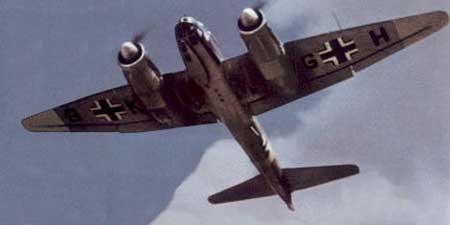
Junkers JU-88
By 1939 the JU-88 had been developed as a fast dive-bomber and reconnaissance aircraft, and later was used as a torpedo-bomber, a night fighter, a heavy day fighter and an anti-tank aircraft. For the most part, American aerospace testing was done on American aircraft. However, beginning with WW I, whenever the United States obtained examples of foreign aircraft - either from friendly countries through cooperative arrangements or from enemies via capture or defection - they were likely to wind up at McCook Field or Wright Field for a thorough evaluation which included flight testing if possible. During WW II evaluations at Wright Field included allied aircraft like the Russian Yak-9 and the British Spitfire and Mosquito, and enemy aircraft including the German JU-88, ME-109, ME-262 and the Japanese Zero. The end of the war brought large numbers of captured aircraft for evaluation. As with other test flight activities, much of the foreign aircraft evaluation moved to Muroc Air Base (later Edwards Air Force Base) after the war, but even then the occasional foreign aircraft came to the Miami Valley for testing, as a MiG-15 (courtesy of a North Korean defector) at Patterson Field attests. (source: Against the Wind).
Specifications Junkers JU-88
Wingspan 65' 10"
Length 47' 1"
Height 15' 11"
Weight (combat) 26,700 lbs.
Powerplants Two Junkers 'Jumo 211' engines
Power output 1,200 HP for each engine
Maximum Speed 295 kph
Cruising Speed 225 kph
Range 1,553 miles
Service Ceiling 27,880 ft.
Defensive Armament 6 x 7.9 mm machine guns
Crew 4
![]()